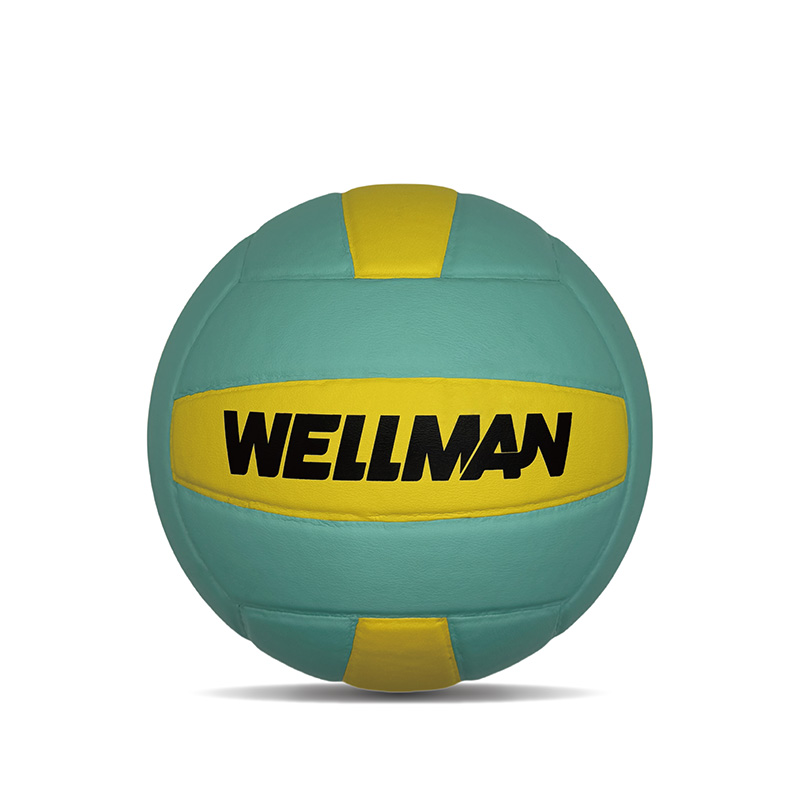Volleyball, a sport loved by millions around the world, owes much of its excitement and competitiveness to the official volleyball ball. This spherical object is not just a simple plaything; it is a carefully designed piece of equipment that plays a crucial role in the game. In this article, we will explore the various aspects of the official volleyball ball, from its construction and materials to its different types and regulations.
The Anatomy of an Official Volleyball Ball
Inner Core
At the heart of every volleyball is the inner core, which is typically made of rubber. This rubber core is responsible for providing the ball with its bounce and resilience. A high-quality rubber core ensures that the ball retains its shape and bounce even after repeated use, making it suitable for intense gameplay.
Middle Layer
Surrounding the inner core is a middle layer, often composed of a nylon or polyester mesh. This layer adds strength and stability to the ball, preventing it from deforming easily. The mesh also helps to distribute the impact evenly when the ball is struck, enhancing its durability.
Outer Cover
The outer cover of the official volleyball ball is what players come into direct contact with. It is usually made of synthetic leather, such as polyurethane (PU) or a combination of materials. PU covers are popular due to their softness, which provides a better grip and touch for players. They also offer good durability and resistance to wear and tear. The outer cover is divided into panels, which are stitched or glued together to form the spherical shape of the ball.
Types of Official Volleyball Balls
Indoor Volleyball Balls
Indoor volleyball balls are specifically designed for play inside a gymnasium. They are typically lighter in weight, with a circumference of around 65-67 cm and a weight of 260-280 grams. Indoor balls have a smooth surface, which allows for better control and precision during gameplay. They are also designed to have a higher air pressure, usually around 0.30-0.325 kg/cm², to ensure a lively bounce on the indoor court surface.
Outdoor Volleyball Balls
Outdoor volleyball balls, on the other hand, are made to withstand the rigors of playing in various outdoor conditions. They are generally heavier and more durable than indoor balls. Outdoor balls often have a larger circumference, around 66-68 cm, and a slightly lower air pressure, around 0.25-0.28 kg/cm². Their surface is also rougher to provide better grip in windy or sandy conditions, and they are often water-resistant to prevent damage from moisture.

Beach Volleyball Balls
Beach volleyball is a popular variation of the sport, and its balls have unique characteristics. Beach volleyball balls are designed to be used on sandy surfaces. They are typically larger and lighter than indoor balls, with a circumference of 66-68 cm and a weight of 250-260 grams. The lighter weight makes it easier for players to handle the ball in the soft sand. Beach balls also have a softer cover to reduce the impact on players' hands when hitting the ball, and they are often brightly colored for better visibility against the beach background.
Regulations and Standards
In official volleyball competitions, there are strict regulations regarding the size, weight, and construction of the volleyball ball. These regulations are set by international sports governing bodies such as the Fédération Internationale de Volleyball (FIVB) and the United States Volleyball Association (USAV).
For example, according to FIVB standards, the circumference of a volleyball must be between 65 and 67 cm, and the weight must be between 260 and 280 grams. The air pressure should be within the range of 0.30 to 0.325 kg/cm². These standards ensure fairness in competition and allow players to perform at their best using a consistent and reliable ball.
Choosing the Right Volleyball Ball
When selecting an official volleyball ball, several factors need to be considered.
Skill Level
Beginner players may prefer a softer and lighter ball that is easier to control. As players progress and develop their skills, they can switch to balls with more advanced features and a firmer feel.
Playing Environment
If you primarily play indoors, an indoor volleyball ball is the obvious choice. For outdoor play, including beach volleyball, an appropriate outdoor or beach ball should be selected to ensure optimal performance in those conditions.
Budget
Volleyball balls come in a wide range of prices. While high-end, professional-grade balls may offer superior quality and performance, there are also more affordable options available that can still provide a great playing experience for recreational players.
In conclusion, the official volleyball ball is a complex and carefully engineered piece of sports equipment. Understanding its construction, types, regulations, and how to choose the right one can enhance your enjoyment and performance in the sport of volleyball, whether you are a casual player or a serious competitor.


 English
English русский
русский Español
Español Deutsch
Deutsch عربى
عربى 中文简体
中文简体

